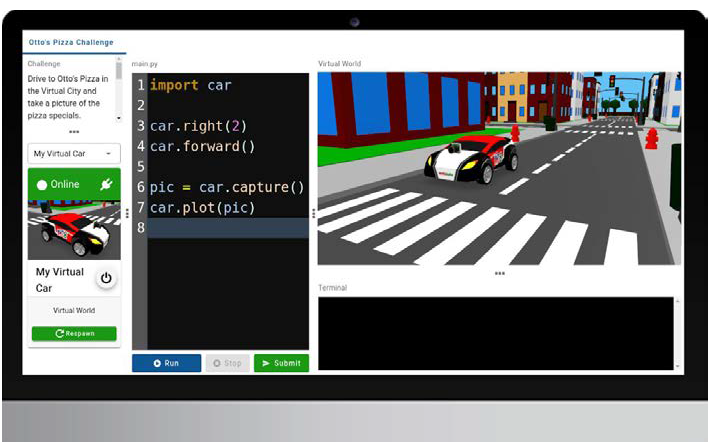
Learning Python and AI by Subscribing to Auto Auto’s Remarkable Project-Based Module
Learning Python and AI by Subscribing to Auto Auto’s Remarkable Project-Based Module
An autonomous car, also known as a self-driving car or driverless car, is a vehicle equipped with advanced sensors, computer systems, and artificial intelligence algorithms that enable it to operate without human intervention. These vehicles are designed to navigate and interact with their environment, just like a human driver would, but without the need for physical control from a person behind the steering wheel. Learning Python and AI is beneficial for programmers as they utilize their advanced coding skills to develop smart cars.
History of Autonomous Cars
In 1939, General Motors showcased a futuristic vision at an exhibition in New York, which included the concept of an automated highway system for self-driving cars. Norman Bel Geddes, a visionary designer at General Motors, created an early prototype of a self-driving electric vehicle guided by radio-controlled electromagnetic fields. By 1958, General Motors demonstrated a functional self-driving car based on Geddes’ work, but the level of autonomy was limited compared to today’s advanced autonomous vehicles.
Levels of Automation in Cars
Significant technological advancements have been made in the latest versions of autonomous cars, enhancing their safety features for passengers and pedestrians on the road. Continuous improvements and ongoing research are being conducted to achieve even higher levels of reliability.
Level 1: “Driver Assistance” provides partial support for acceleration, braking, and steering, but the driver remains responsible for most of the navigation and monitoring of the safety system.
Level 2: Many modern autonomous vehicles have “Advanced Driving Assistance Systems (ADAS)” that continuously assist with necessary driving mechanisms. The driver remains fully attentive but can hand over control of combined longitudinal and lateral functions to the system.
Level 3: A more advanced stage of automation offers conditional driving automation. The autonomy can be fully passed on to the car, but the driver must be present and ready to intervene when needed.
Level 4: The car handles malfunctions without the driver’s help. While the driver may opt to still take control at his own will. These vehicles are restricted to specific places with low-speed limits, making them suitable for taxi services.
Level 5: The vehicle achieves the highest level of automation and does not require any human intervention, including emergency manual control. They lack pedals and a steering wheel, allowing passengers to engage in other activities without concerning themselves with driving.
Computer Science and AI Lessons in School
STEAM curriculum has recognized the significance of integrating computer science and artificial intelligence into school curricula. Given the prominence of technology in today’s world, preparing students from an early age with knowledge and skills in these areas is essential.
Learning made engaging with AutoAuto
AutoAuto is an interactive browser-based module designed to provide students with hands-on projects to practice and master learning Python and AI. The course delves into the process of coding an ordinary automobile and transforming it into an autonomous vehicle over a comprehensive duration of 180+ hours. Students will have the opportunity to explore real-world applications of self-driving cars by working with either the physical AutoAuto cars or their simulated counterparts. This engaging experience of learning Python and AI offers a practical and exciting way to develop programming skills and delve into the world of autonomous vehicles.
Subscribing to AutoAuto is a win-win for educational institutes with tailor-made learning plans that align with their academic needs and capabilities. This comprehensive platform offers lessons designed for beginners to advanced learners, accommodating different educational stages, including Elementary Grade (3rd to 5th), Middle Grade (6th to 8th), High Grade (9th to 12th), and even College level.
One of the most valuable features of AutoAuto is its auto-grading capability, which makes it seamless for teachers to monitor and track students’ progress. This time-saving feature automatically assesses students’ work, providing immediate feedback and insights into their performance.
In conclusion, AutoAuto makes learning Python & AI enjoyable. Needless to mention, the fascination of creating an autonomous car sparks a sense of pride among young learners, given the universal appeal for cars.








Recent Comments